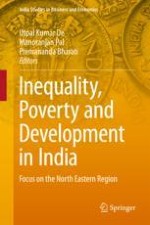2017 | OriginalPaper | Chapter
15. Rural Poverty and Employment Guarantee Scheme: Reflections from West Bengal
Authors : Manjima Mandal, Amal Mandal
Published in: Inequality, Poverty and Development in India
Publisher: Springer Singapore
Activate our intelligent search to find suitable subject content or patents.
Select sections of text to find matching patents with Artificial Intelligence. powered by
Select sections of text to find additional relevant content using AI-assisted search. powered by
